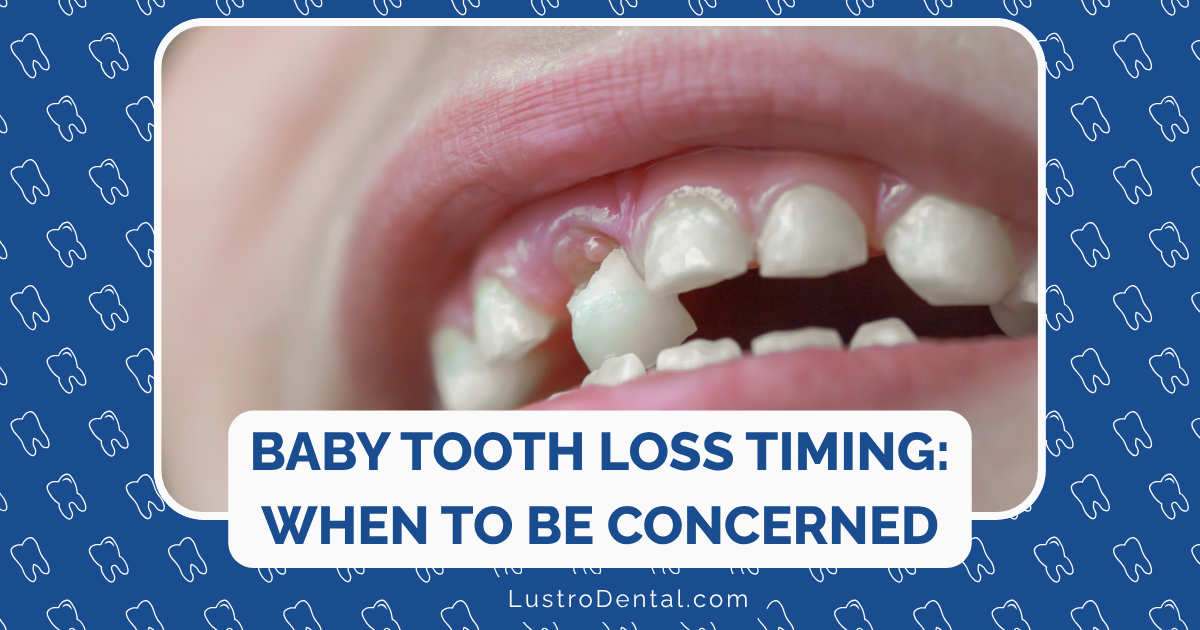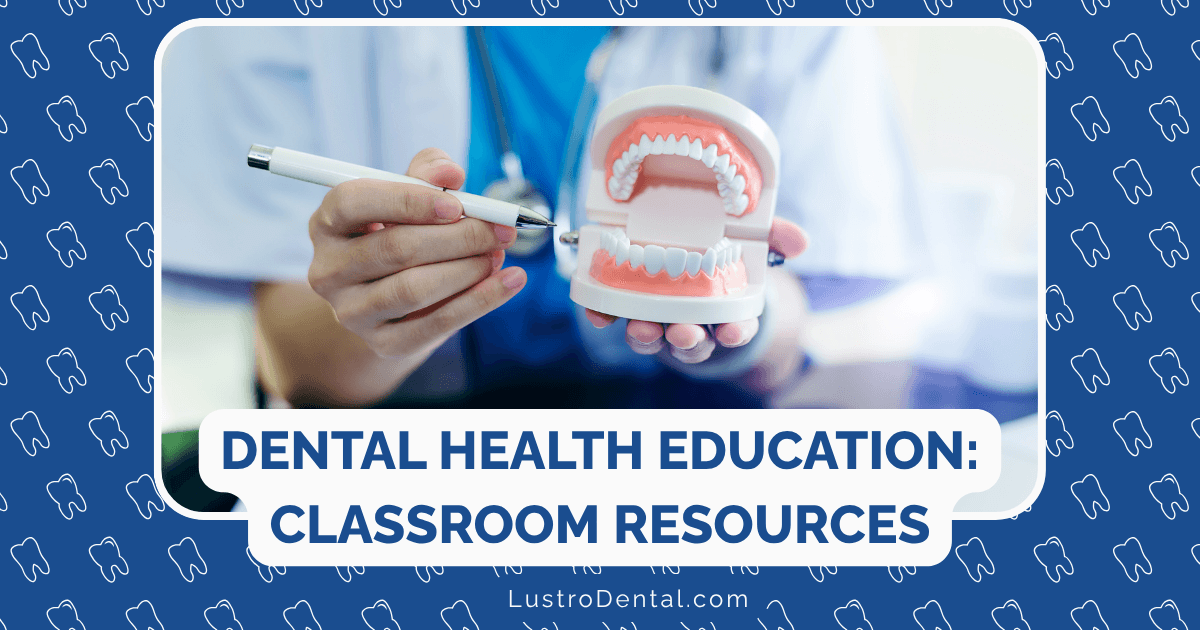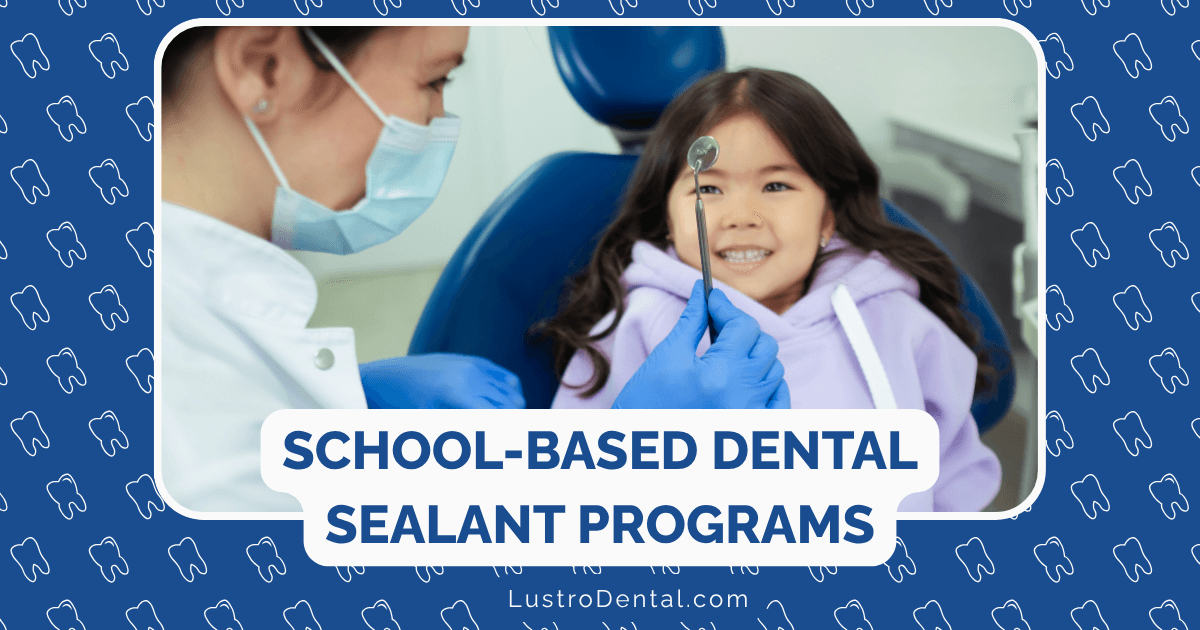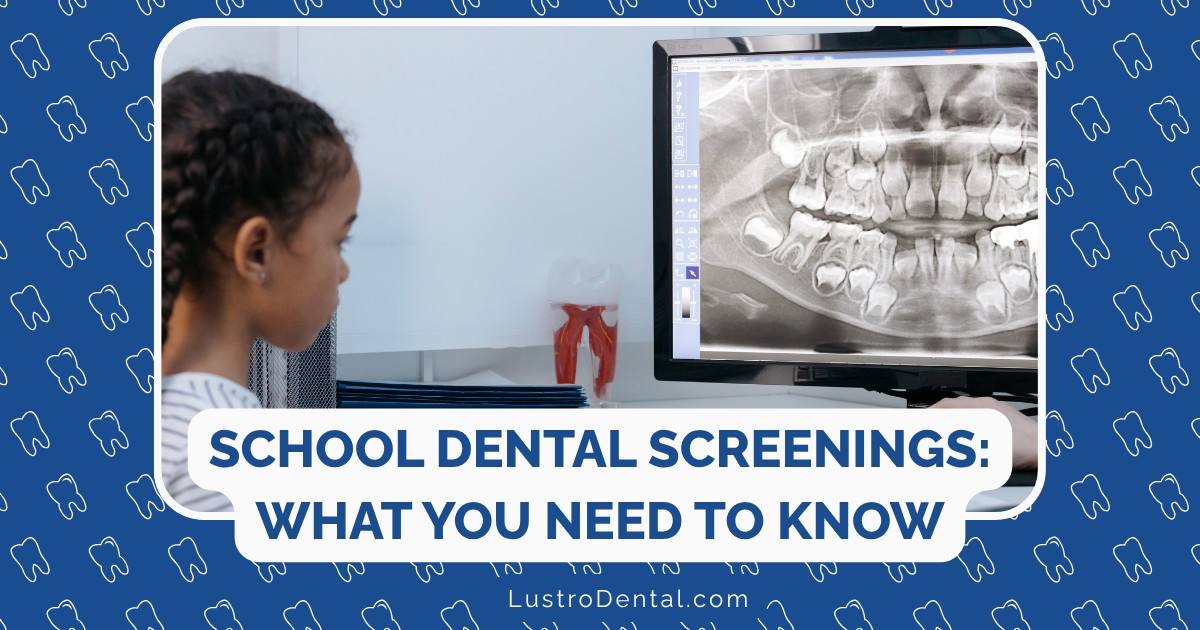When Baby Teeth Fall Out Too Early or Too Late: What Parents Should Know

That wiggly tooth, the excitement of an impending visit from the tooth fairy, the slightly gappy smile in school photos—losing baby teeth is a cherished childhood milestone that most parents look forward to documenting. But what happens when this process doesn’t follow the expected timeline? When teeth fall out too soon, or seem to be hanging on far longer than they should?
As someone who’s passionate about dental health education, I’ve spoken with many concerned parents about these variations in dental development. The good news is that in many cases, slight deviations from the “average” timeline are completely normal. However, there are situations that warrant attention and possibly intervention.
Let’s explore what parents should know about early and late primary tooth loss, when to be concerned, and what treatments might be recommended.
The Normal Timeline: What to Expect
Before we discuss what’s “too early” or “too late,” it helps to understand the typical pattern of tooth loss and eruption.
When Baby Teeth Normally Fall Out
Most children begin losing their primary (baby) teeth around age 6, though this can range from 5 to 7 years. The process generally follows this pattern:
- Lower central incisors (bottom front teeth): 6-7 years
- Upper central incisors (top front teeth): 7-8 years
- Lateral incisors (teeth beside the front teeth): 7-9 years
- First molars: 9-11 years
- Canines (pointed teeth): 9-12 years
- Second molars: 10-12 years
The entire process of replacing all 20 primary teeth with permanent teeth typically takes 5-7 years, meaning most children finish around age 12-13.
Dr. Sarah Johnson of the American Academy of Pediatric Dentistry explains: “This timeline is just an average. Variations of 6-12 months in either direction are considered normal and usually don’t require intervention.”
How Teeth Naturally Fall Out
Under normal circumstances, baby teeth fall out because their roots dissolve (resorb) as the permanent teeth develop and push upward. This process, called physiologic root resorption, causes the baby tooth to become loose over time until it eventually falls out, making way for the permanent tooth to emerge.
When Baby Teeth Fall Out Too Early
Early loss of primary teeth is generally defined as losing a tooth significantly before the permanent tooth underneath is ready to erupt—typically more than a year ahead of schedule.
Common Causes of Early Tooth Loss
1. Dental Trauma
Children are active and accidents happen. Falls, sports injuries, and other impacts can knock out baby teeth prematurely. According to the American Dental Association, dental trauma accounts for up to 39% of all dental emergencies in children.
2. Severe Tooth Decay
Despite being temporary, baby teeth can develop cavities that, if left untreated, may progress to severe decay requiring extraction. The Centers for Disease Control and Prevention reports that about 20% of children aged 5-11 have at least one untreated decayed tooth.
3. Gum Disease
Though less common in children than adults, periodontal disease can affect the supporting structures of teeth, potentially leading to premature tooth loss.
4. Medical Conditions
Certain systemic conditions can affect tooth development and retention, including:
- Hypophosphatasia (a rare genetic disorder affecting bone and tooth development)
- Papillon-Lefèvre syndrome
- Diabetes
- Some forms of cancer and their treatments
- Nutritional deficiencies
5. Congenital Factors
Some children are born with fewer teeth than normal (hypodontia) or may have structural abnormalities that affect tooth stability.
Potential Problems from Early Tooth Loss
When a baby tooth is lost too soon, several issues can develop:
1. Space Loss
Baby teeth serve as placeholders for permanent teeth. When they’re lost early, adjacent teeth may drift into the empty space, reducing the room available for the permanent tooth to emerge.
Dr. Michael Chen, pediatric dentist at Children’s Dental Health Associates, notes: “Within just a few months of early tooth loss, we can see significant shifting of neighboring teeth, which may lead to crowding, impaction, or misalignment of the permanent teeth.”
2. Eruption Issues
Without the proper path maintained by the baby tooth, permanent teeth may erupt in the wrong position or become impacted (unable to fully emerge).
3. Bite Problems
Shifting teeth can lead to malocclusion (improper bite), which may affect chewing, speaking, and overall dental health.
4. Speech Development
Early loss of front teeth, in particular, might temporarily affect speech development, especially for sounds like “th,” “s,” and “z.”
5. Self-Esteem Concerns
While perhaps less medically significant, the aesthetic impact of missing teeth—especially front teeth—for extended periods can affect some children’s confidence and social interactions.
Treatment Options for Early Tooth Loss
If your child loses a baby tooth prematurely, your dentist may recommend one of the following interventions:
Space Maintainers
These dental appliances are designed to hold open the space left by a lost tooth until the permanent tooth is ready to emerge. They come in several forms:
- Fixed Unilateral Space Maintainers: Used when a single tooth is lost; attached to an adjacent tooth with a loop or wire extending to hold the space
- Fixed Bilateral Space Maintainers: Used when multiple teeth are lost on both sides of the dental arch
- Distal Shoe Appliances: Specifically designed for when a primary second molar is lost before the first permanent molar erupts
- Removable Space Maintainers: Similar to retainers, these can be taken out for cleaning
Research published in the Journal of Clinical Pediatric Dentistry shows that space maintainers can significantly reduce the orthodontic complications associated with premature primary tooth loss.
Pediatric Partial Dentures
In cases where multiple front teeth are lost early, especially due to trauma, a pediatric partial denture might be recommended. These removable appliances replace the missing teeth for aesthetic and functional purposes until the permanent teeth erupt.
When Baby Teeth Fall Out Too Late
Delayed shedding of primary teeth occurs when baby teeth remain in place well beyond their expected exfoliation time, typically more than a year past the average age.
Common Causes of Late Tooth Loss
1. Absence of Permanent Successor
Sometimes, a permanent tooth may be congenitally missing (never develops). Without the permanent tooth pushing on the roots, the baby tooth may remain indefinitely.
2. Impacted Permanent Teeth
The permanent tooth may be present but unable to erupt due to:
- Incorrect position or angle
- Lack of space
- Presence of supernumerary (extra) teeth
- Cysts or other pathology
3. Ankylosis
In some cases, the root of a primary tooth fuses directly to the surrounding bone (ankylosis), preventing normal mobility and exfoliation.
4. Developmental Delays
Some children simply develop at a slower rate than average, which can affect dental development along with other growth patterns.
5. Genetic Factors
Family patterns often influence dental development timing. If parents experienced late loss of primary teeth, their children may follow a similar pattern.
Potential Problems from Late Tooth Loss
When baby teeth stay too long, several complications can arise:
1. Ectopic Eruption
Permanent teeth may be forced to erupt in abnormal positions, such as behind or in front of the retained primary tooth, leading to a “double row” appearance sometimes called “shark teeth.”
2. Impaction
Permanent teeth may become impacted (trapped beneath the gum line), potentially leading to cysts or damage to adjacent teeth.
3. Root Resorption of Adjacent Teeth
Misguided permanent teeth may begin resorbing the roots of neighboring teeth instead of their intended predecessors.
4. Malocclusion
Improper tooth alignment can affect bite function and aesthetics, potentially requiring more extensive orthodontic treatment later.
5. Delayed Permanent Dentition
The overall development of the permanent dentition may be delayed, affecting facial growth and dental function.
Treatment Options for Late Tooth Loss
If your child’s baby teeth are not falling out on schedule, your dentist might recommend:
Monitoring
In many cases, especially if the delay is mild, watchful waiting with regular dental check-ups is the appropriate approach.
Extraction
If a primary tooth is significantly delayed in falling out and is interfering with the eruption of the permanent tooth, extraction may be recommended.
Dr. Lisa Williams of Pediatric Dental Specialists explains: “We typically consider extraction when we can see on X-rays that the permanent tooth is developing normally and is being prevented from erupting by the persistent baby tooth.”
Orthodontic Evaluation
An orthodontic assessment may be recommended to evaluate the overall development of the dentition and determine if intervention is needed to guide the eruption of permanent teeth.
When to Consult a Dentist
While variations in the primary tooth loss timeline are often normal, certain situations warrant professional evaluation:
For Early Tooth Loss:
- Any tooth lost due to trauma or injury
- Baby teeth lost before age 4
- Multiple teeth lost much earlier than expected
- Signs of infection, such as swelling, pain, or pus
- Significant decay in remaining teeth
For Late Tooth Loss:
- No loose baby teeth by age 7
- Permanent teeth erupting behind still-firm baby teeth
- Significant asymmetry (teeth falling out on one side but not the other)
- Concerns about overall dental development
- Family history of dental abnormalities
Preventive Measures
While some factors affecting tooth loss timing are beyond parental control, several preventive measures can help maintain healthy dental development:
Preventing Early Tooth Loss:
- Maintain excellent oral hygiene
- Supervise brushing twice daily with fluoride toothpaste
- Assist with flossing once teeth touch
- Limit sugary snacks and drinks
- Schedule regular dental check-ups
- Begin dental visits by age 1 or within 6 months of first tooth eruption
- Continue with visits every 6 months (or as recommended by your dentist)
- Consider preventive treatments
- Fluoride treatments to strengthen enamel
- Dental sealants to prevent decay in molars
- Custom mouthguards for active children and those in sports
- Address habits that may affect dental health
- Discourage thumb-sucking beyond age 4
- Avoid prolonged bottle or sippy cup use, especially with sugary drinks
- Promote a balanced diet rich in calcium and other nutrients essential for dental health
Supporting Normal Dental Development:
- Attend regular dental check-ups
- X-rays can help monitor the development of permanent teeth
- Early identification of potential issues allows for timely intervention
- Follow professional recommendations
- If space maintainers are prescribed, ensure proper care and maintenance
- Complete recommended treatments to prevent complications
- Be observant
- Note when teeth become loose and how long they stay loose
- Watch for permanent teeth erupting in unusual positions
- Monitor for signs of discomfort or changes in eating habits
The Relationship Between Primary and Permanent Teeth
Understanding the connection between baby teeth and their permanent successors helps explain why proper care and timing matter so much.
The Guidance Function
Primary teeth serve as guides for permanent teeth, helping them erupt in the proper position. When this guidance is disrupted—either through early loss or prolonged retention—the permanent teeth may not find their intended path.
The Foundation for Lifelong Dental Health
The patterns established during the transition from primary to permanent dentition often influence lifelong dental health. Addressing issues during this critical period can prevent more complex problems later.
Dr. James Wilson of the American Association of Orthodontists notes: “The mixed dentition period—when both primary and permanent teeth are present—is an ideal time for evaluation. Many developmental issues can be addressed more effectively during this stage than after all permanent teeth have erupted.”
Special Considerations for Different Age Groups
Preschoolers (Ages 3-5)
Early tooth loss in this age group is almost always premature and warrants evaluation. Space maintainers may be particularly important for back teeth lost at this age, as the permanent replacements won’t arrive for several years.
Early Elementary (Ages 6-8)
This is typically when the normal transition begins. Variations are common, but significant deviations from the expected pattern should be evaluated.
Late Elementary/Middle School (Ages 9-12)
By this age, most children should be well into the transition process. Persistent primary teeth, especially if permanent teeth are erupting around them in abnormal positions, may require intervention.
Adolescents (Ages 13+)
Any remaining primary teeth at this age should be evaluated. They may be retained due to missing permanent teeth or impaction issues that require orthodontic or surgical management.
The Emotional Aspect of Dental Development
Beyond the clinical considerations, it’s worth acknowledging the social and emotional aspects of tooth loss timing.
Children who lose teeth significantly earlier or later than their peers may feel self-conscious or anxious. Open, positive communication about individual differences in development can help normalize these variations and reduce anxiety.
For some children, creating special traditions around primary tooth loss—regardless of when it happens—can help make the experience positive regardless of timing.
Conclusion: Every Child’s Dental Journey Is Unique
While there are general patterns and timelines for dental development, each child’s journey is unique. Genetic factors, overall health, and individual growth patterns all influence when baby teeth fall out and permanent teeth emerge.
The key for parents is to stay informed, maintain regular dental check-ups, and seek evaluation when significant deviations from the expected pattern occur. With proper monitoring and timely intervention when necessary, most children can achieve healthy, functional, and aesthetically pleasing dentition regardless of whether their baby teeth fall out “on schedule.”
Remember that dental professionals have extensive experience with the wide range of normal variation in dental development. When in doubt, a consultation can provide reassurance and, if needed, a plan to address any concerns—ensuring your child’s smile develops beautifully, even if it follows its own unique timeline.
Has your child experienced early or late loss of baby teeth? Share your experiences or questions in the comments below!







